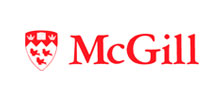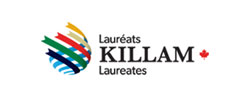Data management and sharing in practice
This section of the module is designed to exemplify previous pages with practical implementation of data management and sharing principles at The Neuro.
We're actively seeking working examples of data management plans and workflows, past, current of in-development. Please contact tosi [at] mcgill.ca">TOSI if you'd like your project to be featured here.
Modality-specific information
Earlier in this guide were covered generalist tools that are available and useful regardless of the type of project and/or for multimodal initiatives. This section, however, focuses on tools that are specific to each of the main modalities used at The Neuro, providing for each, the leading data standards as well as example of repositories and processing tools. This broad overview does not aim to be exhaustive but feel free to reach out to tosi [at] mcgill.ca">TOSI if you feel something should be added or has become outdated.
Invasive Electrophysiology
Neurodata Without Borders is an initiative aiming towards standardization in the field of electrophysiology. Their website lists how to present data but also tools that support and automate this process. For projects that include electrophysiology data as part of a multi-modal objective, an extension has been proposed to BIDS for electrophysiology which would make it easier to align it to other data types used.
The DANDI archive is a data sharing platform dedicated to electrophysiology datasets. OpenNeuro also supports BIDS compliant iEEG data among other neuroimaging modalities.
Microscopy
Good data management practices have reached the field of microscopy somewhat recently and a lot of development is still on-going. Three main data standards coexist:
-
Open Microscopy Environment (OME) is a data standard (akin to DICOM for MRI) designed to provide one easily readable file format for all software, while embedding metadata as part of the image.
-
BIDS for Microscopy is an extension to the popular BIDS specification for Neuroimaging that provides a framework for data storing and sharing, including file naming convention and folder structure.
-
3D-MMS is a simple csv descriptor file that creates a foundation for making shared data re-usable.
Building on top of the OME standard was developed OMERO, a data management and sharing tool. It is free and can be set up on any computer to ease the management of microscopy datasets. One instance has been implemented for The Neuromicroscopy platform managed by Thomas Stroh and access is available upon request.
The OMERO group also designed a repository for the sharing of large reusable datasets, the Image Data Resource.
Non-Invasive Neuroimaging (MRI, EEG, MEG)
Given the prevalence of Computer Scientists working in Neuroimaging many resources already exist listing the various tools available. The BIC’s neuroinformatics page provides a list of such software centered around what has been developed at The Neuro and is available to its members.
EEGNet.org is Neuro-led project for EEG data standardization and sharing.
Alternatively, the Neuroimaging Tools and Resources Collaboratory offers a database that includes many neuroimaging tools developed worldwide.
Omics
There remains a lot of work to be done towards standardizing Omics datasets, but some initiatives have started recently tackling this issue (Baicho, 2023).
Given the vast quantity of data involved in Omics workflow it is a technically challenging problem for the community to resolve. The generalist solutions described earlier in this module are for now likely to be the most readily available for most groups. A few platforms do exist but they tend to be dedicated to specific research questions (e.g. Neuroscience Multi-Omic Data Archive).
About this document
Unless otherwise indicated, all content on these pages is licensed under a Creative Commons Attribution 4.0 International License (CC BY 4.0). Please attribute it to TOSI (the Tanenbaum Open Science Institute), this web page, and the contributors listed below.





